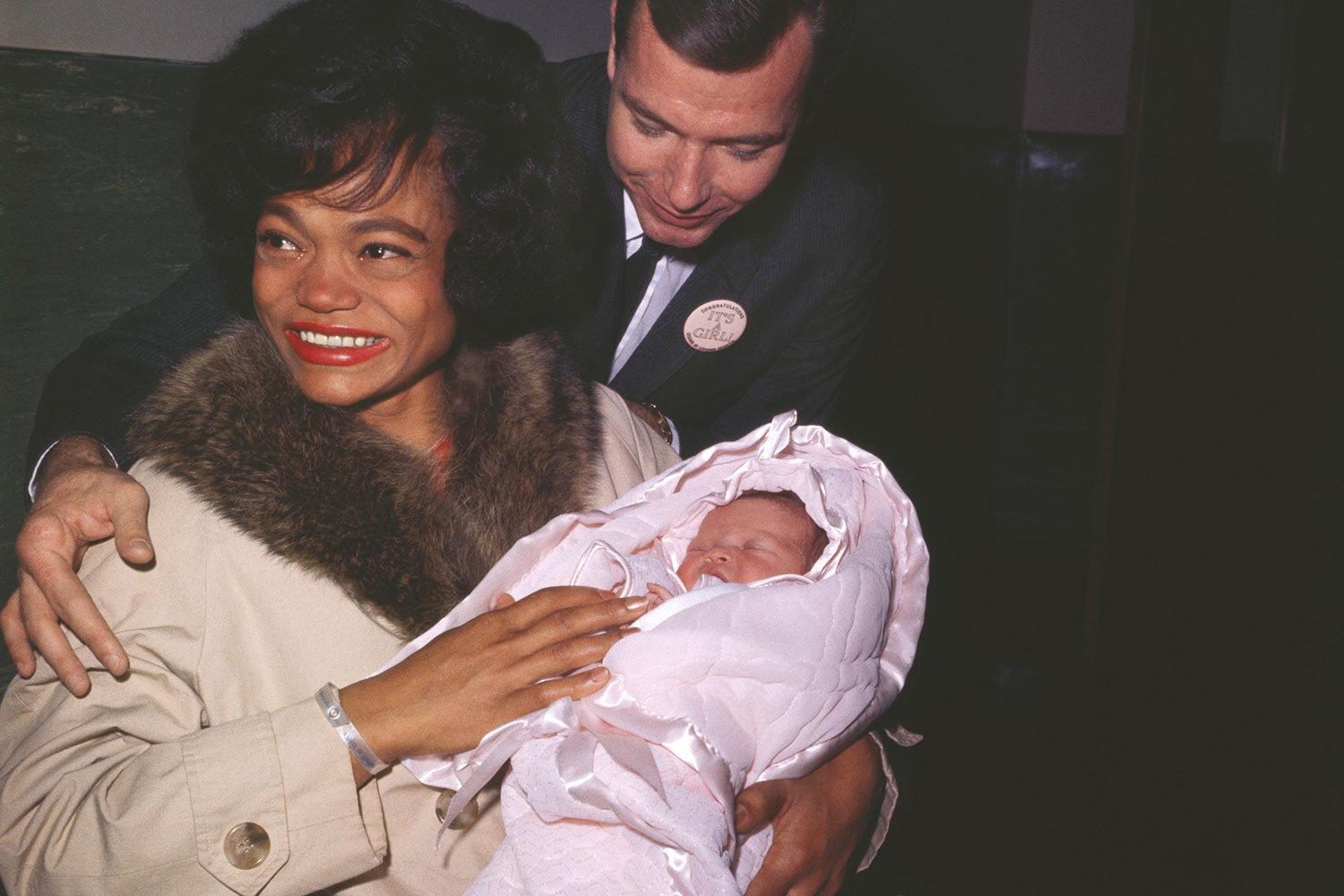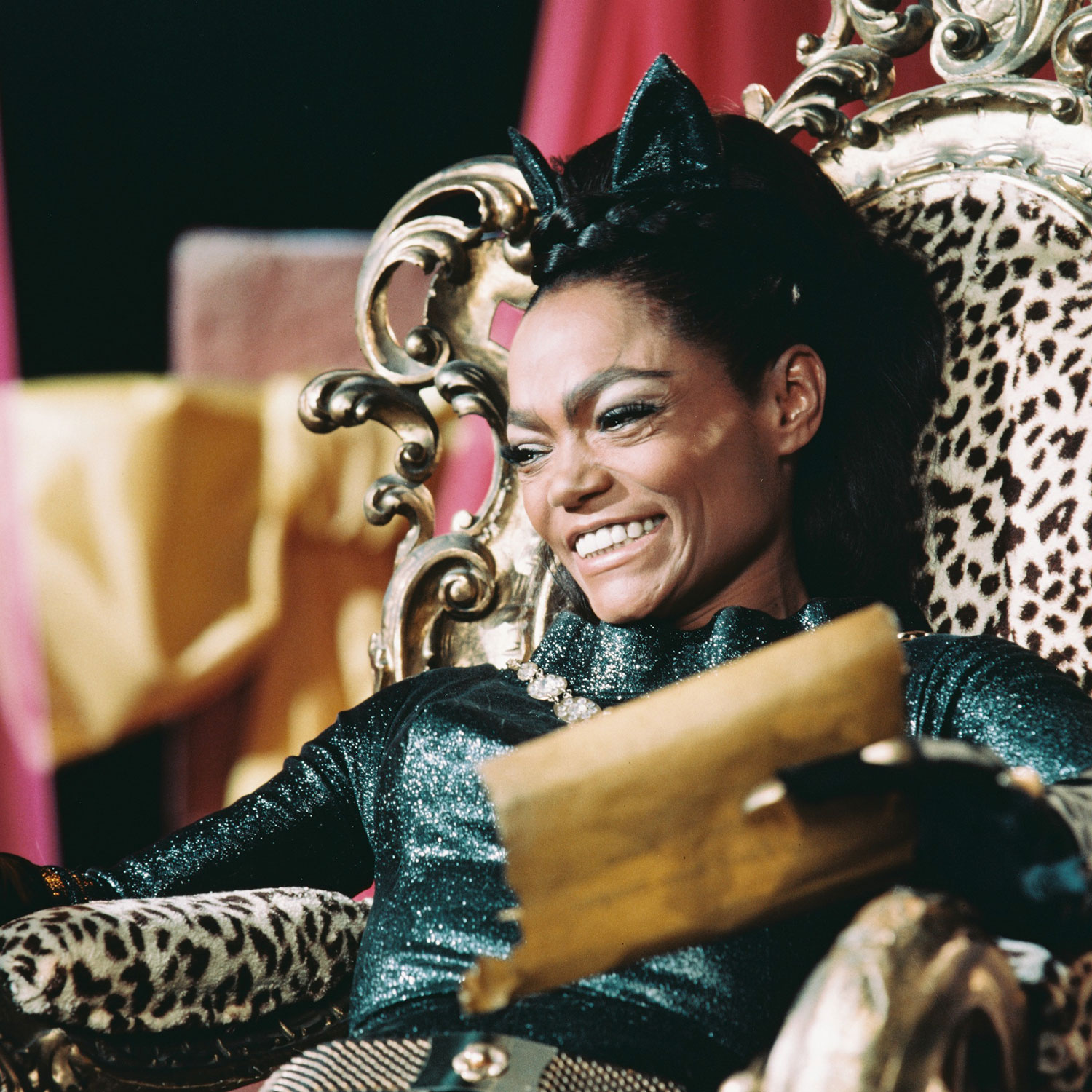How Eartha Kitt defied the odds to become a Hollywood screen icon
Best known for her stellar singing and acting career, spanning six decades, the global star was also an influential activist who wasn’t afraid to push the boundaries

Best known for her stellar singing and acting career, spanning six decades, the global star was also an influential activist who wasn’t afraid to push the boundaries
Words by Michelle Davies
One afternoon in September 1944, 17-year-old Eartha Kitt and her friend Joyce were standing on a New York street outside the cinema they had just left, when a girl approached them for directions to the Max Factor make-up store. ‘I asked her why she was going, because no one our age wore make-up back then,’ Kitt later said. ‘She said it wasn’t for her, it was for Katherine Dunham – and my mind just went “click”.’ The Katherine Dunham Company was world famous, its exclusively black dancers appearing regularly on Broadway and in films. Kitt, who had loved performing at school, told the girl, ‘If you can take me to meet her, I’ll take you to the shop.’ She agreed, and the next day Kitt went with her to audition – and was given a scholarship on the spot. It was the beginning of a career in music and acting that would last six decades.
Born Eartha Mae Kitt on 17 January 1927, in South Carolina, Kitt’s father’s name was redacted on her birth certificate, but he is thought to have been the white son of the man who owned a farm where her mother, Annie Mae (of Cherokee and African descent), picked cotton. Kitt was shunned by the white and black communities alike. ‘I had reddish hair and I was too light,’ she recalled. ‘Everyone called me “that yellow girl” and nobody wanted me.’
Decades later her daughter, Kitt Shapiro, said her mother ‘carried the scar of her rejection all her life. She never really felt comfortable in her own skin.’ When Kitt was five, her mother placed her with a foster family who made her pick cotton, cook, garden and do housework for her keep. (In an emotional interview in 1989, she said the teenage children had beaten and sexually abused her.) Aged eight, after her mother’s death – from suspected poisoning – Kitt was sent to live with an aunt in New York’s Harlem district. She showed an aptitude for the piano and singing at school, but was working as a seamstress when she landed the audition with Katherine Dunham.
Videos you may like:
Video you may like:
For the next six years, Eartha Kitt toured with the company across Europe and South America. In Paris in 1950, aged 23, she developed a solo cabaret act at a nightclub called Carroll’s. One evening, Orson Welles was in the audience to witness her slinking across the chaise lounges, exuding evocative, feline seductiveness. He described her as ‘the most exciting woman in the world’, and cast her as Helen of Troy in his Parisian production of Dr Faustus. After an acclaimed run, Kitt returned to New York a burgeoning star and began a recording career, with songs including I Want To Be Evil, Just An Old Fashioned Girl and, most famously, Santa Baby. She spoke four languages, yet could sing in seven.
Privately, Kitt struggled to equate herself with her stage persona. ‘I don’t think I’ve ever thought of it as being me,’ she said. ‘I can go into being Eartha Kitt once I have the make-up and wigs and eyelashes...a character in fairyland.’ As her fame grew, Eartha Kitt became a magnet for rich white men. Charlie Revson, the founder of Revlon, even created a lipstick (Fire And Ice) in her honour. Her relationships made her a target for abuse, which infuriated her. Black actors Sidney Poitier and Harry Belafonte had white girlfriends, but they weren’t criticised for it. ‘People would say, “Why didn’t you marry a black man?” And I would reply, “Because the white girls had them!”,’ she later said. Aged 26, she met Arthur Loew Jr, a Hollywood fixture – his grandfathers founded MGM and Paramount, he’d dated Debbie Reynolds and Janet Leigh, and his best friend was James Dean. Loew wanted to marry Kitt, but his family was horrified. ‘His mother said, “I’ll shoot him in the foot before he marries a brown-skinned woman,”’ Kitt later lamented.
Celebrity news, beauty, fashion advice, and fascinating features, delivered straight to your inbox!

In 1959, friends introduced her to estate agent Bill McDonald, also white. They married in May 1960, and their daughter Kitt was born in November 1961. Motherhood had a profound effect on the star. ‘She’s brought me something I always lacked: serenity,’ said Kitt. ‘She’ll be brought up with all the love and affection that everyone needs, and which I never had.’ The marriage faltered, however, and in 1964 she divorced McDonald on the grounds of mental cruelty. ‘My husband is a successful man, but just not worldly enough for me,’ she said. For Kitt, being worldly meant having an understanding of the issues affecting society and trying to solve them. In 1966, she founded the Kittsville Youth Foundation for underprivileged children in LA, and also supported a Washington community initiative that helped youths stay out of trouble. By this stage she was a major star, with films such as St Louis Blues, co-starring Nat King Cole, raising her profile. In 1967, she hit a career high, succeeding Julie Newmar as Catwoman in Batman. Along with Star Trek actress Nichelle Nichols, she was one of the first African-American women to secure a starring role on TV that didn’t portray her as someone’s servant.

But her outspoken spirit landed her in trouble. In 1968, she was invited to a lunch at the White House with ‘Lady Bird’ Johnson. America was in turmoil over the Vietnam War and Kitt, who opposed it, made an impassioned speech, saying, ‘You send the best of this country off to be shot and maimed.’ The first lady was brought to tears – and the backlash was brutal. Kitt lost lucrative work, and the CIA compiled a dossier on her. But she was unrepentant. ‘For years I went along with the idea that entertainers shouldn’t be involved with politics,’ she said. ‘[But] I realise because of our contact with the public we have to speak out, to make those responsible more aware of what is happening where they perhaps cannot see.’
Still popular in Britain, Eartha Kitt moved to London, and also toured Europe and South Africa. Eventually the US warmed to her again, and she returned to Broadway in 1978, when she was nominated for her first Tony award for the musical Timbuktu! She was also invited back to the White House by President Jimmy Carter. The following decade saw her move into the disco arena with the song Where Is My Man? She gained a large gay following, and reciprocated by giving benefits for HIV/AIDS organisations and supporting marriage equality. She also added Unicef to her roster of charities. ‘[Hers] is the tale of one of the most singular women of her age: a black American entertainer who would never allow herself to be reduced to a racial stereotype, who always insisted on her individuality,’ says John L Williams in America’s Mistress: The Life And Times Of Eartha Kitt. Beyoncé, meanwhile, has made her a feminist icon for a new generation by sampling a 1982 interview – in which Kitt scathingly rejects the suggestion that she should compromise for a man – during her live shows. Eartha Kitt became ill with colon cancer in 2006 and died two years later on 25 December. But her daughter summed up her mother’s continuing influence when she said, ‘She may have come into this world belonging to nothing and no one, but that is not how she left it.’
The leading destination for fashion, beauty, shopping and finger-on-the-pulse views on the latest issues. Marie Claire's travel content helps you delight in discovering new destinations around the globe, offering a unique – and sometimes unchartered – travel experience. From new hotel openings to the destinations tipped to take over our travel calendars, this iconic name has it covered.